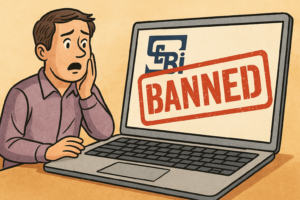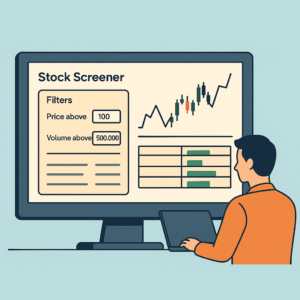“Trade Your Way to Financial Freedom” by Van K. Tharp is not merely a technical analysis manual or a vague self-help book; it’s an encapsulation of knowledge gathered from years of experience, extensive research, and countless trials and errors in the world of stock markets.
The intrigue and allure of the financial markets have captivated the imaginations of countless individuals, yet they remain elusive to many. Success in these markets, particularly the stock market, requires a sophisticated blend of knowledge, strategy, psychology, and sheer acumen. This cocktail of prerequisites forms the basis of Van K. Tharp’s seminal book, “Trade Your Way to Financial Freedom”. The book, a classic in the realm of financial literature, opens the door to a profound understanding of trading and investing, liberating its readers from traditional confines of stock trading to a new realm of financial independence.
The book offers readers a clear path to navigating the labyrinth of financial markets, underpinned by a solid psychological and strategic foundation. It emphasizes the importance of creating a personalized trading system and provides valuable insights into effective money management.
However, it’s crucial to note that Tharp’s book is not a get-rich-quick scheme. Instead, it’s a thorough guide for traders who are serious about mastering their craft, with long-term financial freedom as their goal. The beauty of the book lies in its unique perspective that reframes the concept of trading, pivoting away from merely buying and selling stocks, to a broader view that includes aspects of psychology, risk management, and system development.
The book’s impact is timeless; despite being published over two decades ago, its principles remain relevant in today’s rapidly evolving financial markets. Tharp’s approach to financial markets goes beyond mere strategies and techniques, delving deep into the realms of psychology and personal development. It advocates for a holistic view of trading, aligning one’s financial goals with personal values and life objectives.
In this blog post, we’re about to embark on an in-depth exploration of the book, breaking down its key concepts, shedding light on the strategies outlined, and revealing its transformative potential. By extracting the essence of “Trade Your Way to Financial Freedom,” this blog aims to provide a comprehensive understanding of the book, helping traders enrich their trading arsenal and strengthen their financial acumen.
Key Ideas from Trade Your Way to Financial Freedom
- Holistic Trading System: A key concept presented by Tharp is the idea of a trading system, which extends beyond the scope of merely predicting stock prices. It involves setting trading rules, money management, understanding the psychology of trading, and continuously improving these elements. For instance, Warren Buffett follows a value investing approach, which is a holistic system involving deep financial analysis, risk management, and discipline.
- R-Multiples: Tharp introduces R-multiples, a concept defining risk to reward ratio in any trade. The R in R-multiples stands for risk, which should always be defined before entering a trade. If you risk $100 in a trade and make $300, the R-multiple is 3R. This concept encourages traders to focus on trades that offer higher potential reward for every dollar risked, like venture capitalists who invest in startups, knowing that one successful investment can offset many losses.
- Position Sizing: According to Tharp, position sizing is the most critical factor in achieving financial freedom. It involves determining the number of shares or contracts to trade in accordance with risk tolerance and account size. Take the example of a trader with a $10,000 account, who decides not to risk more than 2% of their account in a single trade. Their position size will be defined accordingly to keep potential losses within this limit.
- Expectancy: This concept refers to the average amount you can expect to win (or lose) per trade. It’s a product of the probability of win, average win size, probability of loss, and average loss size. Traders can use this to evaluate the profitability of a trading system over time, similar to casinos which calculate the odds to ensure they always come out ahead over the long term.
- System Development: Tharp stresses the importance of creating a trading system tailored to one’s personality, risk tolerance, and financial goals. For instance, an impulsive trader could devise a swing trading system that capitalizes on their inherent desire to make frequent trades while still adhering to sound money management rules.
- Personal Psychology: Understanding one’s psychology plays a significant role in trading. Emotions such as fear and greed can greatly impact a trader’s decisions. Recognizing these emotions and keeping them in check is essential. The book emphasizes this point through stories of traders who fell prey to their emotions and subsequently made poor trading decisions.
- Market Types: According to Tharp, market conditions greatly influence the performance of trading strategies. He identifies six market types: bullish, bearish, sideways, volatile, non-volatile, and normal. Each market type favors different strategies, similar to how different weather conditions favor different outfits.
- Trading as a Business: Tharp treats trading like running a business. He recommends creating a business plan outlining your mission, objectives, strategies, and risk management measures. For example, a day trader’s business plan might involve trading highly volatile stocks and limiting losses to 1% of their account balance per trade.
- Backtesting: Tharp recommends backtesting a trading strategy on historical data to gauge its efficacy before deploying it. This method is akin to a car manufacturer testing a new model in various conditions before launching it into the market.
- Continuous Improvement: According to Tharp, a trader should strive to improve their trading system continuously. This is similar to companies like Apple that continuously innovate to stay ahead in the market.
- Opportunity Cost: Tharp introduces the concept of opportunity cost in trading, the idea that time and money invested in one trade could have been better used elsewhere. Successful traders assess the potential profitability of all available options before making a decision.
- Compounding: Tharp elucidates the power of compounding in growing wealth. By reinvesting profits, traders can exponentially increase their wealth over time, similar to how a snowball grows larger as it rolls downhill.
- Diversification: Diversification is crucial in managing risk, as it spreads investments across various assets to mitigate potential losses. Think of it as not putting all your eggs in one basket.
- Cutting Losses: Tharp stresses the importance of cutting losses short to preserve capital. This is a widely accepted practice in the trading community, symbolized by the adage, “Let your profits run and cut your losses short.”
- Pivots & Central Pivot Range (CPR): Tharp also talks about using technical analysis tools like Pivots and CPR. These tools help identify potential support and resistance levels, guiding entry and exit decisions.
- Winning and Losing Streaks: Tharp mentions the statistical inevitability of streaks in trading, both winning and losing. He advises preparing for such inevitable occurrences and integrating them into your risk management plan.
- Self-Sabotage: Tharp discusses the dangers of self-sabotage in trading. Traders often unknowingly sabotage their success due to limiting beliefs or emotional distress. Self-awareness and emotional management are key to overcoming this.
- Reward to Risk Ratio: Tharp emphasizes the importance of focusing on the reward-to-risk ratio, rather than merely considering the probability of a win. The idea is to make trades where potential rewards significantly outweigh the risks, ensuring long-term profitability despite some losses, much like successful businesses that undertake projects where expected returns outweigh potential risks.
As we delve into the rich tapestry of Tharp’s ideas, the wisdom behind “Trade Your Way to Financial Freedom” becomes vividly clear. His approach to trading and finance transcends the traditional and delves into an enlightened understanding of the intricate interplay between the financial markets, human psychology, and one’s personal development. This amalgamation of factors forms the foundation of truly effective trading strategies that pave the way to financial independence.
Tharp’s book stands out in its ability to blend these elements seamlessly, offering a comprehensive trading system that considers every aspect of trading. Whether it’s the creation of a personalized trading plan, the intricacies of position sizing, the art of mastering one’s psychology, or the importance of continuous learning and adaptation, Tharp offers an enlightening perspective that’s crucial for any aspiring trader.
In essence, “Trade Your Way to Financial Freedom” transcends the realm of trading books to emerge as a compendium of wisdom for those striving for financial freedom. It isn’t merely about trading; it’s about mastering one’s financial destiny. By internalizing Tharp’s key ideas and implementing them, one steps closer to achieving financial freedom, underlining the timeless relevance and enduring legacy of this groundbreaking book.
Did you know? Traders like to use our co working space in Bangalore
Learn more about our coworking space on our YouTube channel Work Theater Studios where we talk about a variety of topics including personal finance, entrepreneurship, business and life.
Did you know? We also have a private theatre in Bangalore.




